
Water determines the Great Lakes Region’s economic future
Climate change, geopolitics and business opportunities power a blue economy
After months of calls to shut down industrial work sites in northern B.C. due to concerns they’re COVID-19 “incubators,” and 250 cases at five projects, Provincial Health Officer Dr. Bonnie Henry has finally taken action. But critics say it’s too little, too late.
“We now have our first Elder in ICU in hospital because of an LNG worker — it was just a matter of time,” said Sley’do Molly Wickham, a member of the Gidimt’en clan of the Wet’suwet’en First Nation, upon whose territory the Coastal GasLink pipeline is being built.
“More and more Wet’suwet’en people are getting [COVID],” she added. “Most of the cases I know of have gotten it directly from somebody who works at LNG Canada or somebody that works on the Coastal GasLink project.”
On Dec. 29, in response to the increasing number of cases at work sites and associated transmission to northern communities, Henry issued a public health officer order requiring five major industrial sites — including LNG Canada and Coastal GasLink — to scale back their operations.
“There is an immediate and urgent need for focused action to reduce the rate of the transmission of COVID-19 associated with the projects,” Henry said in the order.
However, companies are permitted to rapidly rebuild their workforces starting this week.
The order follows several complaints of unsafe working conditions at LNG Canada. Just a week before the order, industrial janitors at the site voted overwhelmingly in favour of striking due in part to poor health and safety protections. Months earlier, WorkSafeBC conducted investigations into complaints from LNG Canada workers about insufficient COVID-19 cleaning procedures, which were first reported in The Narwhal.
WorkSafeBC also inspected the Site C work camp’s sewage treatment facility and found the facility did not have a plan to sufficiently protect workers from COVID-19.
The order also follows six open letters to Henry from concerned individuals and groups calling for the work sites to be shut down, including three letters from Indigenous groups, one signed by hundreds of frontline health workers and another signed by 15 non-profit organizations.
The first letter came from former Northern Health chief medical officer David Bowering just 10 days after the state of emergency was declared last March. “The camps are and will be COVID-19 incubators placing the workers, the host communities and the home communities of the workers at unacceptable risk,” he predicted in his letter.
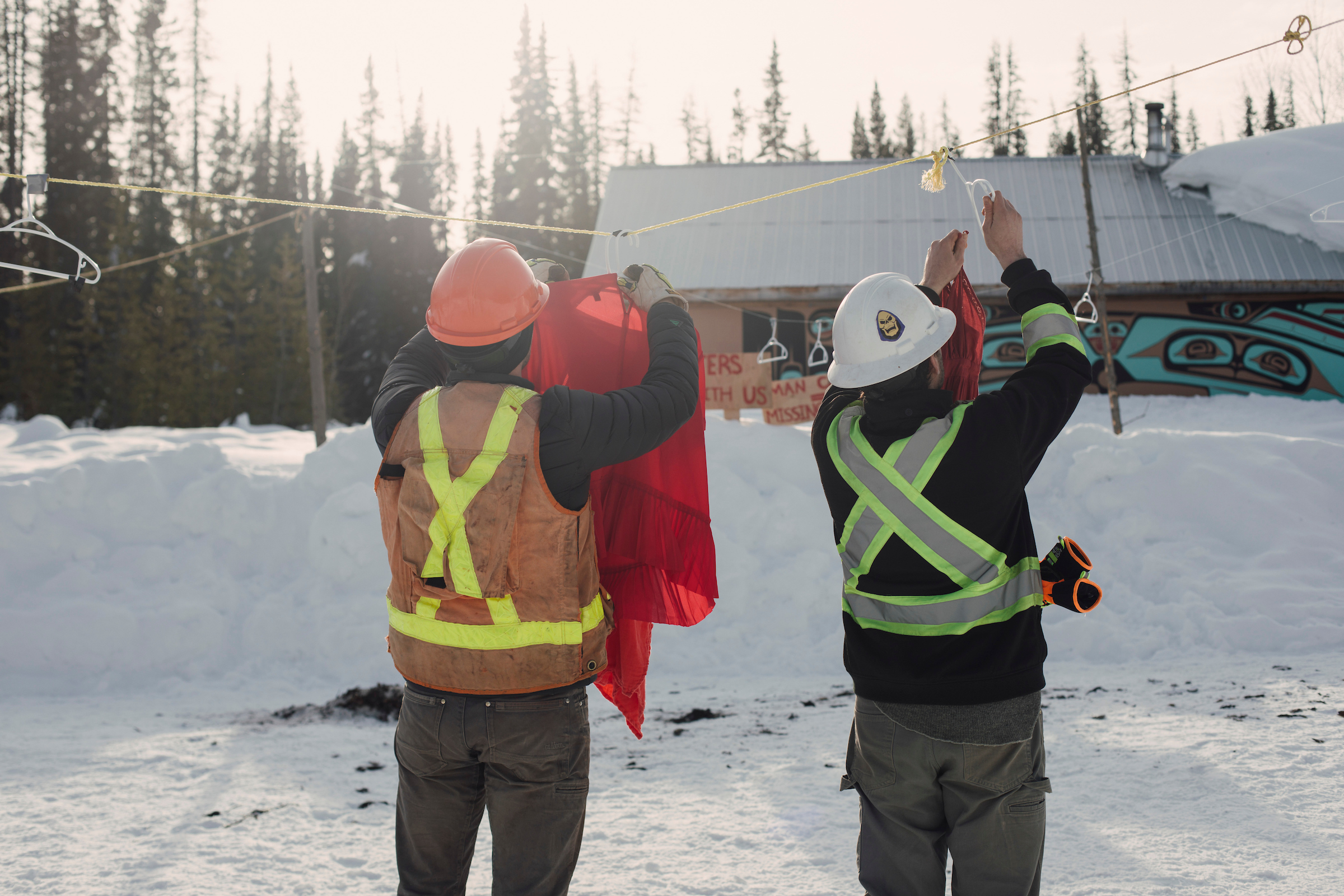
Coastal GasLink workers take down red dresses that were hung to signify Missing and Murdered Indigenous Women and Girls at the Unist’ot’en Healing Centre on Wet’suwet’en territory. Wet’suwet’en matriarchs released an open letter in November warning of the COVID-19 risks to Indigenous Peoples. Photo: Amber Bracken / The Narwhal
A
letter from more than 20 Wet’suwet’en matriarchs, or Ts’ako ze’, followed in November and emphasized the risks to Indigenous Peoples, who are more likely to contract the virus and experience complications due to existing health issues.
“The economy cannot come before Indigenous lives,” they wrote.
Bowering told The Narwhal he welcomes the new restrictions but that they’re long overdue. “My first reaction is a bit of disappointment that [the province] carried that risk so long,” he said. “And then finally, when it’s impossible to ignore it, they take some action.”
Here’s everything you need to know about the public health order and the people and projects affected.
Henry’s order states that there has been a “rapid increase” in the number of COVID-19 cases associated with large-scale industrial projects in northern B.C., which has resulted in the spread of the disease to surrounding communities, including Indigenous communities.
Henry said the seasonal slowdown offered an opportunity to help “break the cycle of transmission.”
“A rapid return to full operating capacity on the part of large-scale industrial operations … will likely further fuel and accelerate the cycle of transmission of COVID-19 among the workers and the surrounding communities,” the order says.
Henry pointed out that Northern Health doesn’t have the capacity to handle a high volume of cases. The health authority serves around 300,000 people and has just 41 critical care beds plus an additional 23 beds it can use if necessary.
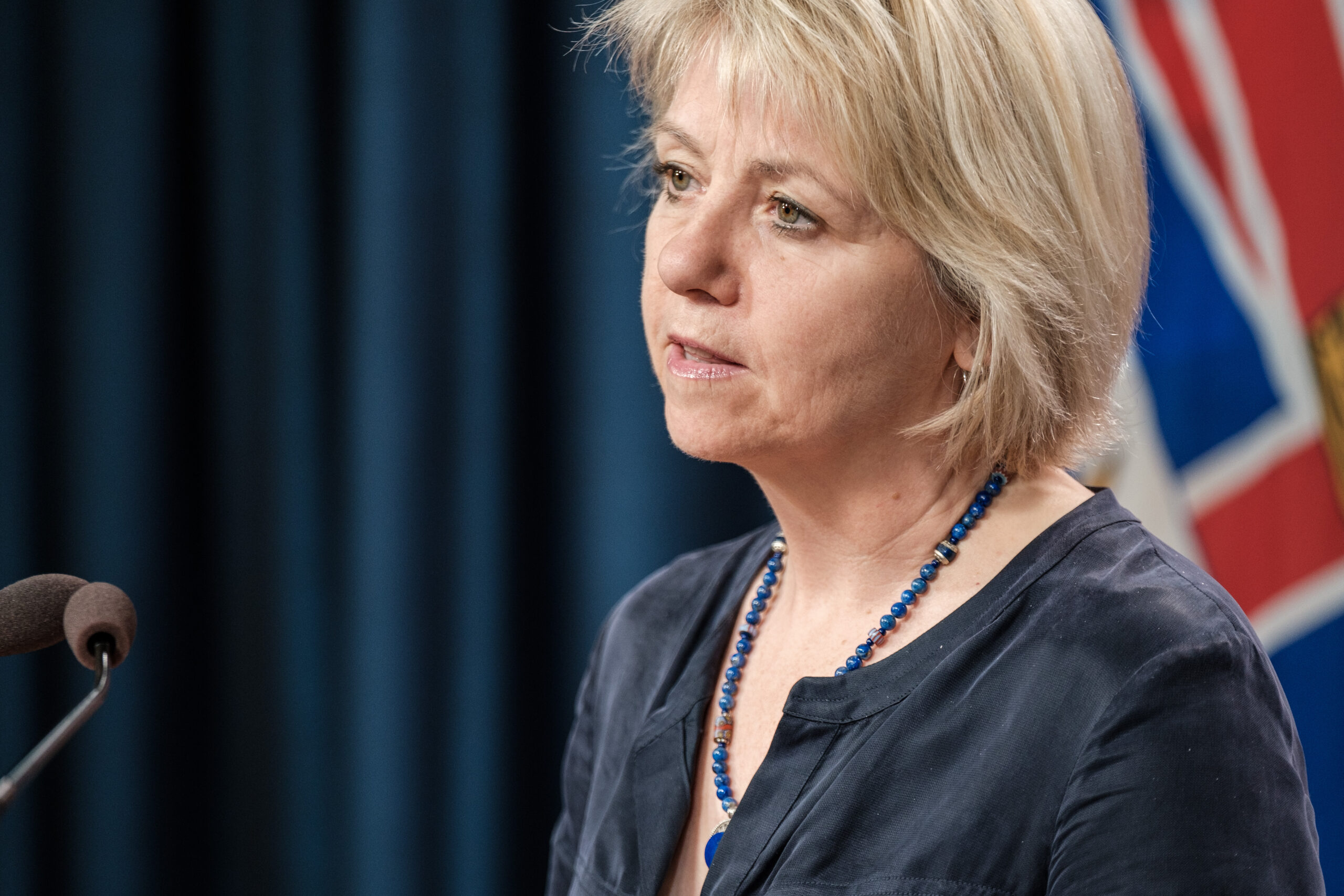
Chief Provincial Health Officer Dr. Bonnie Henry says it is difficult to respond to COVID-19 cases and contact trace at remote work sites. Photo: Province of B.C. / Flickr
In early December, Northern Health said it had started to transfer patients to other health authorities due to the increasing number of cases in the region. As of Jan. 7, the region has had 2,338 confirmed cases and 32 deaths. There are 438 active cases, with 38 people hospitalized including 16 in intensive care.
Henry added that it’s challenging for public health officials to respond to cases at remote work sites and industrial camps, and a high volume of cases makes contract tracing challenging.
Also, because work on industrial projects is typically done in shifts that last for days or weeks with workers living on-site, asymptomatic workers could unknowingly transmit the virus to the work site from their home communities and vice versa.
In a statement, the Ministry of Health told The Narwhal this informed the decision: “We know many of these camps have workers coming and returning from across the province — as well as outside the province — and limiting the amount of workers allowed to return to these five project sites and associated camps at one period of time will assist in managing the potential impact of additional COVID-19 activity in Northern Health.”
The public health order includes LNG Canada in Kitimat and its associated pipeline project, Coastal GasLink. It also includes BC Hydro’s Site C dam, a small section of the Trans Mountain pipeline near Valemount and a hydroelectric project to provide power to the Rio Tinto aluminum smelter in Kitimat.
There have been 250 cases reported between the five industrial projects, but Northern Health said it only has case numbers related to outbreaks, not individual cases nor clusters. Each case and cluster is assessed on a number of factors, such as location and potential contact with other individuals, and depending on the results an outbreak may or may not be declared. Sometimes, just one case can be deemed an outbreak. This means that the true number of cases related to the projects could be larger.
As of Jan. 7, the only active case reported is in isolation at Site C.
The health authority was also unable to confirm how many community cases have been linked to the industrial sites but said it is aware of workers transmitting the virus to close contacts, such as household members.
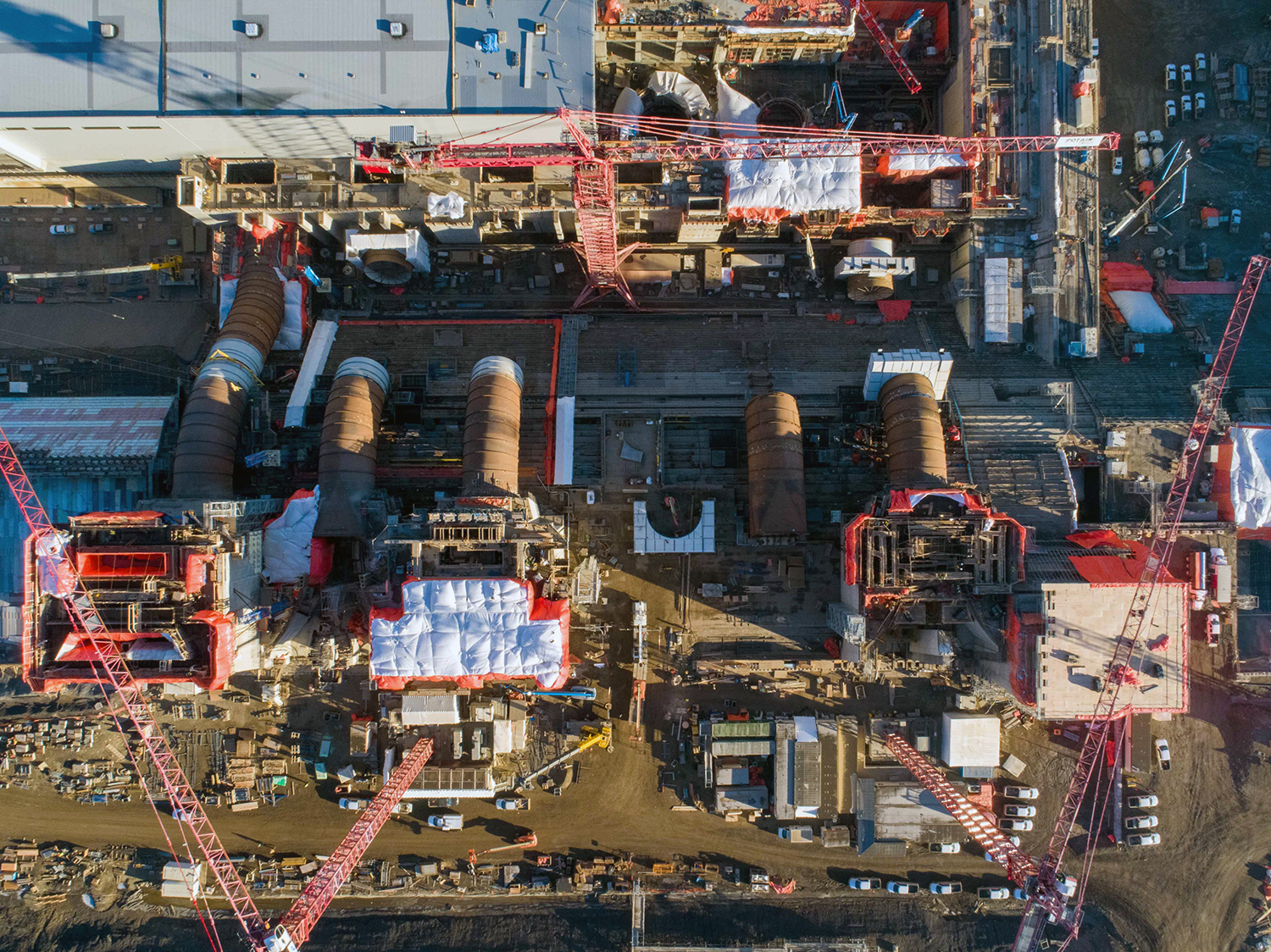
An aerial view of the Site C dam construction site. As of Jan. 7, there is only one active case reported in isolation at the site. Photo: Site C Clean Energy Project
LNG Canada reported two outbreaks, one on Nov. 19 and a second on Dec. 17, with a total of 72 cases. Northern Health declared the first outbreak over on Dec. 25 and stated there are no active cases associated with the second outbreak as of Dec. 30.
One confirmed outbreak between two Coastal GasLink work camps has resulted in 56 confirmed cases, with no cases still active, according to Northern Health.
Site C has had 31 cases related to the project since the beginning of the pandemic, with just one case remaining active as of Jan. 7.
Trans Mountain has reported a total of 91 cases since the beginning of the pandemic. Rio Tinto referred The Narwhal to Northern Health to get the number of cases associated with its project, but Northern Health was unable to provide that information prior to publication.
LNG Canada told The Narwhal a total of 3,200 employees worked on the project prior to the December holiday season, but noted that there were only about 2,000 people on-site at a time due to the nature of shift work. The order reduced the number of workers to 450 and permitted an additional 400 to return on Jan. 6. It allows for an increase to 1,100 by the end of the month.
According to Coastal GasLink’s construction updates, the project had over 4,000 workers in the field at the beginning of December. The order required a reduction to just 400 people until February, at which point it can bring back an additional 600 workers. The company did not respond to requests for further information prior to publication.
A spokesperson for BC Hydro said the Site C project has been operating with reduced staff throughout the pandemic but had about 1,450 workers in camp at the beginning of December. The project was required to reduce its staff to 400 until Jan. 7, at which point it can increase its workforce to 800. By Jan. 21, the project can bring back another 300 workers.
Trans Mountain was unable to provide The Narwhal with the number of workers normally at the Valemount camp prior to publication, but it was required to reduce its workforce to 50, increasing to 150 in early January and up to 600 by mid-February.
Rio Tinto was required to cut its project workforce in half — from 320 to 160. The order permitted an increase of up to 280 people in early January.
According to the Ministry of Health, the baseline numbers represent the number of workers that remained at each project over the holidays.
Before a company can increase its workforce beyond the limits outlined in the order, it has to submit a “restart plan” to the provincial health officer and Northern Health’s chief medical officer. The plan is required to detail how the company will manage increasing the number of workers while reducing the risk of COVID-19 transmission both on-site and in surrounding communities. Companies will be required to limit the movement of workers between job sites as much as possible and ensure workers stay for a minimum two-week period at the new location after any move.
Soon after declaring a state of emergency, B.C. deemed industries such as mining and oil and gas “essential” and issued a set of guidelines for industrial operations through the BC Centre for Disease Control. As long as an industrial site had a safety plan approved by the health authority or the province, and on-site modifications for safety protocols in place, it was allowed to continue business as usual.
According to the provincial guidelines for industrial sites, workers were permitted to travel to surrounding communities when not working but were advised against going into any public establishments, and employers were told to recommend minimizing the number of workers frequenting places like grocery stores.
According to the Ministry of Health statement, these guidelines are currently being updated to restrict travel between industrial camps and local communities. More information about the updates will be provided over the next few weeks.
“These restrictions will include workers remaining in camps during off-hours and modifying transportation requirements to increase physical distancing,” the statement said.
No one really knows — not even government officials.
According to the B.C. government, essential services are “daily services essential to preserving life, health, public safety and basic societal functioning.”
Emergency Management BC, a division of the Ministry of Public Safety, told The Narwhal it drafted a list of essential services, collected input from all of the other government ministries and then produced a final list.
According to a CBC report, members of the government struggled to justify defining industrial projects like Site C and LNG Canada as essential. CBC obtained internal government documents that questioned the designation and asked if an exemption list would be created.
“I can’t argue Site C, LNG Canada, etc. are essential,” then-deputy minister of energy, mines and petroleum resources Dave Nikolesjin wrote in an email to a colleague, which was obtained by CBC.
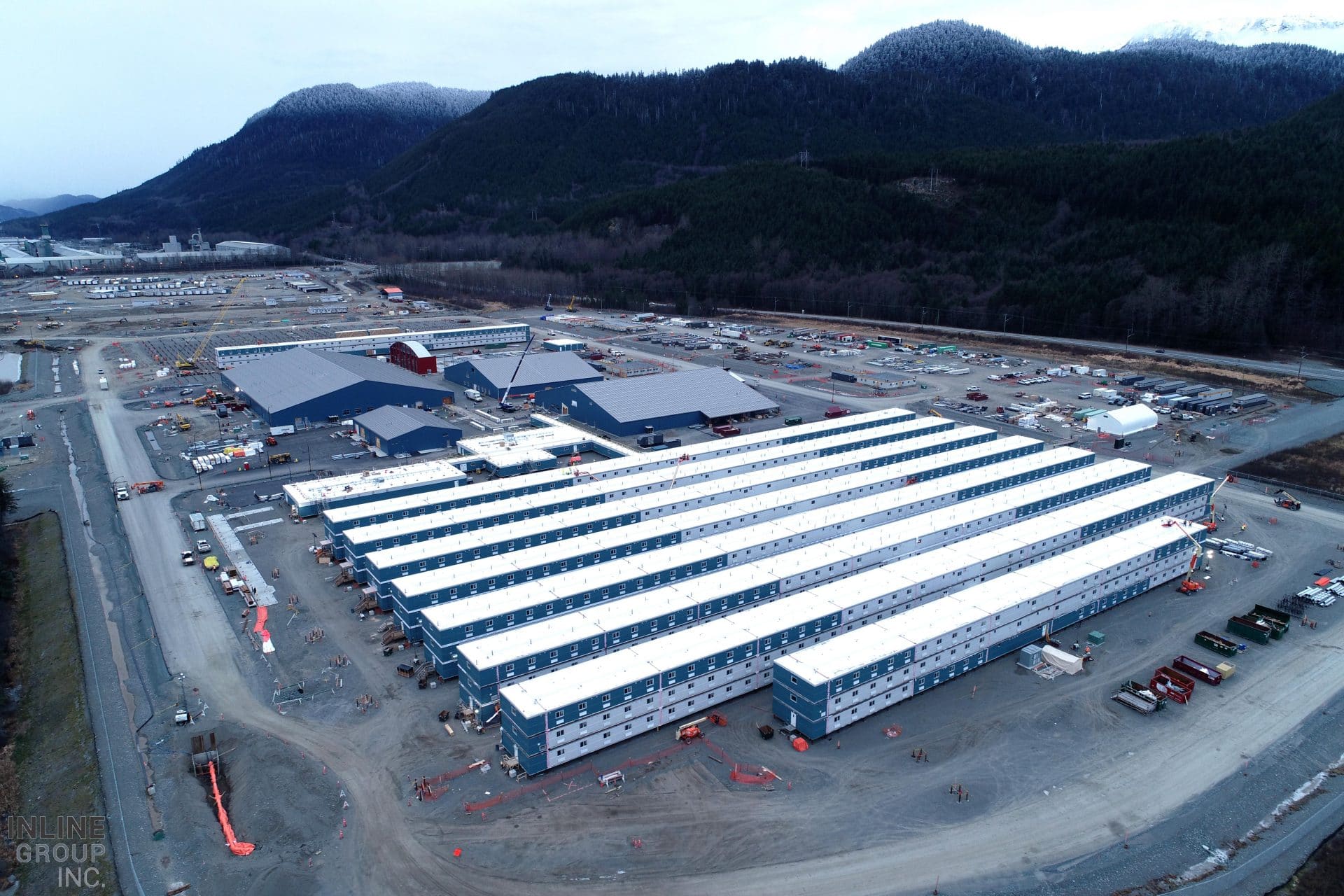
The B.C. government has struggled to justify why projects like LNG Canada are essential. Multiple LNG Canada employees have complained about unsafe working conditions at the site. Photo: Bird-ATCO
Henry attempted to justify the classification at a press conference on March 30. “I think it’s important to recognize you can’t just abandon a large mine or industrial site,” she said. “That’s not safe, it’s not safe for the community, or for the environment as well.”
Critics argue that projects like the construction of a pipeline or LNG facility have nothing to do with basic societal functioning.
“What’s the definition of essential?” Bowering asked. “It certainly doesn’t fit mine, and it probably doesn’t meet most people’s in the north.”
The LNG Canada employees who filed complaints with WorkSafeBC said the COVID-19 cleaning procedures in common areas, rooms and work spaces were insufficient. WorkSafeBC inspectors conducted investigations on Aug. 28 and Oct. 19 and noted the cleaning schedule was not posted in high-risk areas and discussed cleaning procedures and the need for COVID-19 instructions in individual rooms with representatives from the subcontractor and Northern Health.
However, WorkSafeBC did not find any violations of the Workers Compensation Act or the public health order. An LNG Canada spokesperson told The Narwhal WorkSafeBC didn’t take further action as a result of the inspections.
There have since been more complaints about COVID-19 measures at LNG Canada. According to Gary Hill, an industrial janitor who works at the LNG Canada site for a subcontractor, Dexterra, he and his coworkers have been complaining about insufficient COVID-19 protocols for months. Hill said his team was not provided with sufficient personal protective equipment like masks and gloves. He described the working conditions as unsafe.
“When we finish our [safety] meeting, we load up in the van, and there’s six or seven of [us] all squished together,” he said.
The workers are moved between various facilities on the project site, cleaning for 10 to 11 hours a day, Hill said. The industrial janitors recently voted 84 per cent in favour of a strike for safer working conditions. A union representative said discussions with Dexterra are underway and further action will be taken depending on the results.
“One of my co-workers retired and went home in October or November, and he went home with the COVID,” Hill said. The former colleague isolated with his daughter in Prince Rupert and she contracted the virus. Hill said both have since recovered.
He said the real risk is workers travelling to and from the site. “You got people from the United States, you got people from Alberta, you have people from all over the world working.”
According to the LNG Canada website, the project has a policy in place that forbids all non-local workers “from leaving the project site, and other work areas, or [visiting] any public establishments when they are on rotation.” However, local workers, who work alongside those from other regions, commute between the project site and their home communities.
When The Narwhal spoke with Wickham before the public health order, she said she regularly observed Coastal GasLink workers on Wet’suwet’en territory who were not following basic COVID-19 protocols like social distancing and wearing masks.
As mandated by the Ministry of Health, WorkSafeBC conducts regular routine and non-routine inspections at industrial sites, both in-person and remote. Two weeks before the public health order, the Ministry of Health strengthened enforcement by increasing the number of in-person inspections. A WorkSafeBC representative was unable to say how many inspections were being done previously and how many are being down now.
According to WorkSafeBC, if an inspector finds any evidence of non-compliance with the public health order, the local health authority will be contacted for enforcement and further action.
Northern Health said it is actively working with industrial sites in “developing safety plans, which includes case and contact management, and reporting to the health authority.”
The Ministry of Health statement said “operators who choose to disregard health orders can face enforcement actions such as fines and/or further orders to temporarily cease operations.”
The new restrictions are affecting the five projects in different ways.
An LNG Canada spokesperson said the order will not impact the project’s schedule. “We remain committed to delivering first cargo by the middle of this decade.”
Coastal GasLink did not respond to requests for an interview or information, but a statement on its website said both of the camps where there were outbreaks remain closed to non-essential workers. “We are conferring with our contractors to develop remobilization plans that safeguard the health of our workforce and neighbouring communities, as well as abide by the new health order.”

A Coastal GasLink work camp near Houston, B.C. The company states that camps with outbreaks have been closed to non-essential workers. Photo: Amber Bracken / The Narwhal
A statement from BC Hydro noted that the order “does not impact people working on the project that live locally or those that work on off-dam site activities such as clearing, transmission construction and Highway 29 work.” But, it added, “these changes will have a further impact on our overall project schedule and cost.”
As The Narwhal recently reported, the Site C project is already facing delays and unknown cost overruns, potentially in the billions.
According to Trans Mountain, the order only impacts its Valemount work camp, which is one of five in the province. A spokesperson told The Narwhal the company is reviewing the impacts on the workforce and schedule.
A Rio Tinto spokesperson said the project to increase hydro capacity from its facility at Kemano is on hold until the company can rebuild its workforce to safely proceed.
Bowering said after his initial relief that some action was being taken, he found himself shocked and confused by the fact that the number of workers is permitted to rapidly increase.
“Let’s not just get back to business as usual, as fast as possible,” he said, adding that any further decisions about how to proceed should have Indigenous representatives at the table.
He said a majority of the workers come from Alberta, which puts the province’s decision to keep pushing forward with these projects in direct contradiction to its efforts to prevent the spread of the virus.
“The order should say you can’t have people flying into the province to do work for us, on things that you could argue aren’t essential at all, while everything else is shut down and everyone else is putting their lives on hold,” he said. “No one else in the country, and certainly not in B.C., is expected to travel … but these large conglomerations of people have been not only allowed to, but are almost encouraged to because these full-speed-ahead projects are being promoted.”
Bowering was careful to note that the decision would have been made by the province, not by Henry herself. “I actually feel sorry for her having to be caught in the middle of that, trying to present some kind of public health rationale where none can possibly exist.”
He said the province recognizing the spread of the virus from these industrial sites and work camps to Indigenous communities is a healthy step forward. “To acknowledge that is really important.”
Sierra Club BC executive director Hannah Askew, who wrote one of the open letters, told The Narwhal protecting Indigenous communities from the virus is the least the province can do, given its history of colonization and B.C.’s commitment to upholding the rights of Indigenous people.
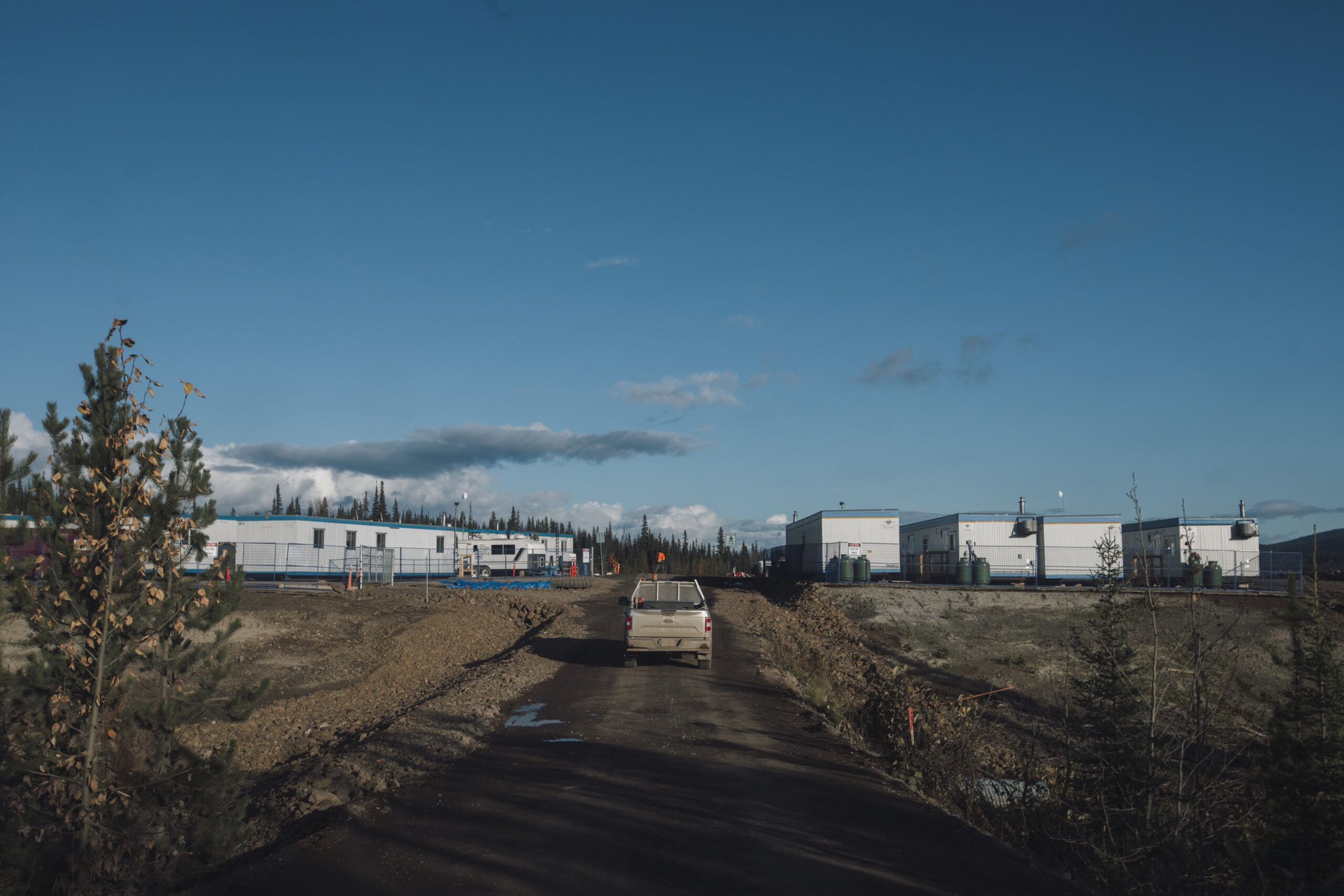
It may be difficult to monitor Coastal GasLink compliance with COVID-19 procedures due to the remoteness of its work sites. Photo: Amber Bracken / The Narwhal
“COVID is directly seen as a threat to language preservation and language revitalization efforts, because so many communities are dependent on a tiny handful of language speakers who are often elderly and have other health vulnerabilities,” she said. “It’s of the utmost importance to protect them.”
Wickham is concerned that despite the public health order, the remoteness of the Coastal GasLink pipeline will make it hard for officials to monitor the company’s compliance. She noted the number of Coastal GasLink workers in the area has dropped dramatically since Dec. 29, but added there has been no direct communication from the province or the company to the Wet’suwet’en.
“CGL is famous for not complying — they have dozens and dozens of non-compliance violations,” she said, referring to the company’s environmental track record. “We’ll be monitoring very carefully as to how many people we’re seeing on the territory. How much traffic are we seeing? Where are people going?”
Updated Jan. 8, 2021, at 5:28 p.m. PST: this story was updated to clarify that WorkSafeBC — not LNG Canada — didn’t take further action as a result of the inspections.
Updated Jan. 14, 2021, at 11:33 a.m. PST: this story was updated to include the findings of the WorkSafeBC inspections.
Get the inside scoop on The Narwhal’s environment and climate reporting by signing up for our free newsletter. On a warm September evening nearly 15...
Continue reading
Climate change, geopolitics and business opportunities power a blue economy

10 billion litres of sewage are dumped into Winnipeg’s lakes and rivers each year. Some...

Court sides with Xatśūll First Nation, temporarily halting Mount Polley mine waste expansion
